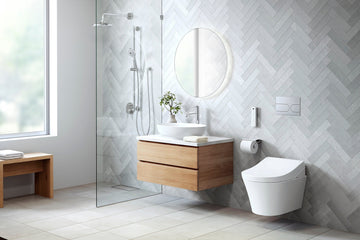In the rapidly advancing world of technology, the bathroom has not been left behind. The introduction of gesture controlled toilet systems has transformed the way we interact with one of the most essential fixtures in our homes. For industry professionals, particularly those in Quality Assurance (QA), understanding these systems is crucial for ensuring they meet the high standards of modern consumers.

Understanding Gesture Controlled Toilet Systems
Gesture controlled toilet systems represent a significant leap forward in bathroom technology. These systems allow users to interact with their toilets without the need for physical contact, using sensors to detect hand movements to perform tasks such as flushing, lifting the seat, or activating bidet functions. This technology not only enhances convenience but also promotes hygiene, making it especially relevant in today's health-conscious world.
The Importance of Gesture Control in Hygiene
Hygiene has always been a top priority in bathroom design. With the advent of gesture control technology, maintaining cleanliness has become even easier. By minimizing the need for physical contact with toilet surfaces, the risk of germ transfer is significantly reduced. This innovation is particularly beneficial in public restrooms where the potential for contamination is high.
Applications in Public and Private Spaces
While gesture controlled toilet systems are a fantastic addition to private homes, their application in public spaces is even more impactful. Airports, shopping malls, and office buildings can benefit from the enhanced hygiene and user experience these systems offer. By reducing touchpoints, these systems help maintain cleaner environments, making them an attractive option for facilities management.
Challenges in Implementation
Despite their many benefits, implementing gesture controlled toilet systems comes with its own set of challenges. One of the primary concerns is the system's sensitivity and accuracy. Ensuring that sensors accurately detect gestures without misinterpretation is crucial for user satisfaction. QA professionals play a vital role in testing these systems to ensure they meet the necessary performance standards.
Quality Assurance in Gesture Controlled Systems
For QA professionals, the rise of gesture technology presents both opportunities and challenges. The need to test these systems for reliability and user-friendliness is paramount. QA teams must consider factors such as sensor range, response time, and the system's ability to function under various lighting conditions. Additionally, they must ensure that the system can accommodate users with varying levels of mobility and dexterity.
Innovations in Sensor Technology
The sensors used in gesture controlled toilet systems are at the forefront of this innovation. These sensors must be both sensitive and discerning, able to distinguish between intentional and accidental gestures. Advances in sensor technology have made it possible to achieve the high level of precision required for these systems to function effectively.
Looking Ahead: The Future of Gesture Controlled Toilets
As technology continues to evolve, the future of gesture controlled toilet systems looks promising. We can expect to see even more integration of smart technology, allowing these systems to be controlled via smartphone apps or voice commands. This evolution will provide even greater convenience and customization for users.
For more insights into the future of bathroom technology, visit our article on innovative toilet remote controls.
Conclusion
Gesture controlled toilet systems are paving the way for a new era of bathroom innovation. By enhancing hygiene, convenience, and user experience, they represent a significant advancement in bathroom technology. For industry QA professionals, staying abreast of these developments is crucial for ensuring that these systems meet the high expectations of modern consumers.

FAQ
Q: How do gesture controlled toilet systems enhance hygiene?
A: These systems reduce the need for physical contact with toilet surfaces, minimizing the risk of germ transfer.
Q: What are the challenges in implementing gesture control technology?
A: Challenges include ensuring sensor accuracy and system reliability across different conditions and user abilities.
Q: Can gesture controlled systems be integrated with other smart technologies?
A: Yes, they can be integrated with smartphone apps and potentially voice command systems for added convenience.
This article contains affiliate links. We may earn a commission at no extra cost to you.






